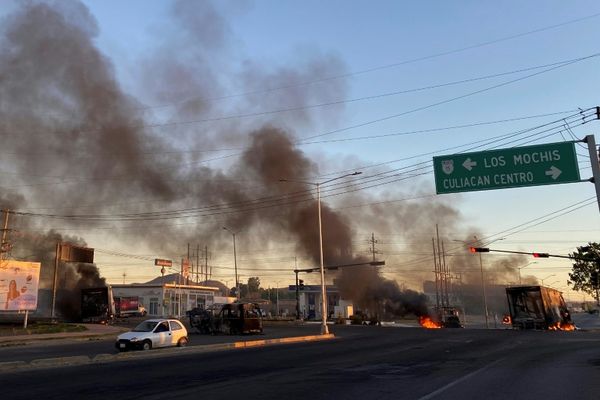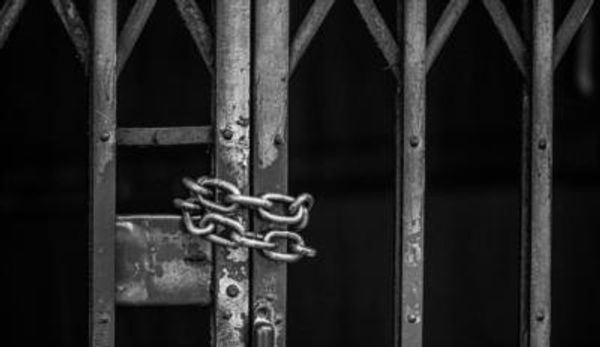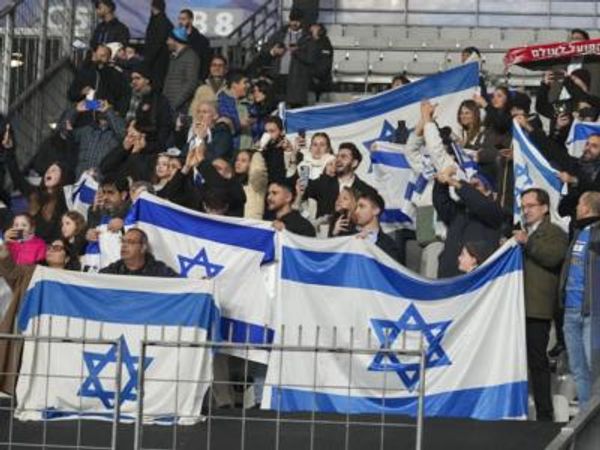
Support truly
independent journalism
Israel carried out airstrikes on southern Lebanon and Hezbollah retaliated with a drone and rocket barrage on Saturday morning, igniting fears of regional war in the Middle East.
Hezbollah said its attack, which involved the launch of over 320 drones and rockets, was also in retaliation for Israel’s killing of its commander Fuad Shukr in Beirut in July.
The Lebanese group said it struck a “special military target as well as Iron Dome platforms and other sites”, but the full response would take “some time”.
The first phase of the retaliatory attack had been concluded “with complete success”, it said in a statement.
“At this moment, the Islamic Resistance in Lebanon is at the highest readiness and will confront any Zionist aggression, especially if it touches civilians, with a severe punishment.”
Israeli Army Radio reported that a woman was injured by shrapnel in Acre in northern Israel.
Hezbollah struck shortly after Israel conducted 40 airstrikes in southern Lebanon in what it described as a “preemptive attack”, Al Jazeera reported.
“In a self-defence act to remove these threats, the IDF is striking terror targets,” Israeli military spokesman Daniel Hagari said.
Israel’s defence minister Yoav Gallant declared an “emergency situation” for the next 48 hours, local media reported. The declaration “enables the military to issue instructions to civilians, limit crowd sizes and close relevant areas off”, YNet News reported.
The escalation came as mediated talks for a ceasefire in Gaza stalled. Reuters reported, citing a Palestinian official, that the Hamas delegation had departed Cairo, where the talks were being mediated by the United States, Egypt and Qatar.
Any hope of a breakthrough had receded after Hamas said it would not accede to new demands introduced by Israel since the Palestinian group accepted a version of the ceasefire proposal unveiled by American president Joe Biden in May, Reuters reported.
Israel demanded to keep troops in two strategic corridors – Netzarim Corridor, which runs the width of Gaza, and Philadelphi Corridor along the border with Egypt – and retain the option to resume fighting after the first phase of a ceasefire, The New York Times reported.
Hamas asked for a permanent ceasefire and complete withdrawal of Israeli forces.
Israel continued to pummell Gaza with airstrike and shelling in the meantime, killing more than 70 Palestinians.
The Israeli air and ground assault on the territory – which came after Hamas raided southern Israel and killed some 1,200 people on 7 October – has left over 40,000 Palestinians dead, according to Gaza’s health officials.
The bombardment has displaced 1.9 million people in Gaza and left the besieged territory’s entire population of over 2.2 million at the risk of famine and disease, according to the UN agency for Palestinian refugees.
The Israelis have also killed at least 632 Palestinians and displaced 1,400 in over 1,000 attacks in the West Bank since 7 October, according to data from Israeli forces, Palestinian officials and the UN’s Office for the Coordination of Humanitarian Affairs.







